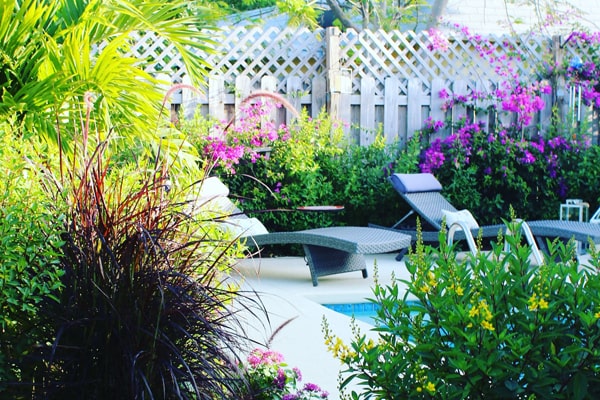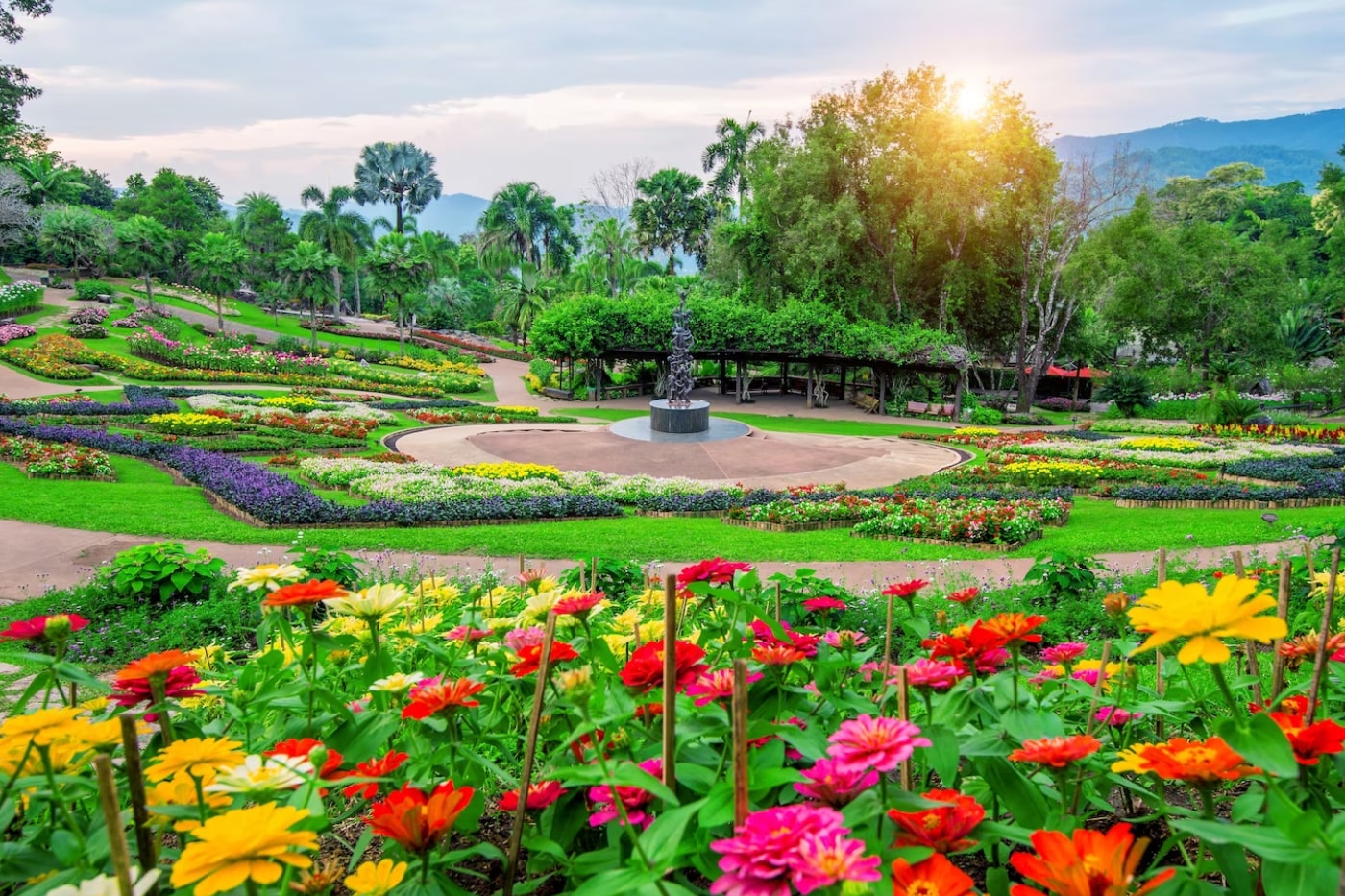Spring is almost here – what are your plans for the growing season? Getting your gardening plans sorted out early is a must to make the most out of the season. What should you prioritize as the weather warms up? How should you prepare the garden for new growth? What activities can you try to enjoy in the garden with the whole family? In this guide, we’re outlining spring garden ideas and activities that you should try this season:
Spring is an exciting time for gardeners as the warm weather returns, and the dormant soil begins to awaken with new growth. Here are some ideas and activities for your spring garden:
Contents []
A To-Do Checklist for Spring in the Garden

The warm weather is waking up the dormant plants. Here are some of the things to prioritize in the garden during spring to ensure a productive season:
Clean up: Time to clear unwanted debris in the garden to make way for new growth. That includes raking fallen leaves, sticks, and small stones on your garden plots. Remove dead, diseased, or dying branches and tidy up the shed. Prepare your garden tools for another productive season ahead.
Starting seeds: If the weather is still too cold to plant outdoors, you can start growing seeds indoors in the early spring. Just transplant the seedlings outdoors as soon as the weather warms up.
Prepare the soil: After clearing the garden of unwanted debris, it’s time to prepare the soil for planting. As you know, the soil is depleted of nutrients at the end of every growing season. Amending the soil with organic fertilizer or compost brings nutrients back into the soil. Amending the soil also improves its structure and fertility, ensuring it can support plant life throughout the growing season.
Planting: Once the soil has been amended, plant your crops. We suggest starting with cool-season vegetables like radishes, lettuce, peas, and spinach because the climate is perfect for these crops. It’s also a good idea to plant spring-blooming bulls like hyacinths, tulips, and daffodils. By the summer season, your garden will be in full bloom! Cool-season herbs like parsley, dill, fennel, borage, and cilantro can also be grown in the early days of spring.
Pruning: Pruning is one of the essential tasks to complete at the start of the spring season. Trimming dead, dying, diseased plant stems encourages new growth. Pruning also improves air circulation, promotes healthy foliage, and reduces the spread of diseases. For flowering plants, pruning encourages the production of new blooms. Keep your pruning shears sharp to avoid damaging the plant stems because this will make plants vulnerable to pests and diseases!
Pest Control: Speaking of pests, keep an eye out for burrowing insects, small rodents, and worms that could wreak havoc on your spring garden. Implementing pest control measures as soon as possible is essential so the problem won’t worsen. We suggest attracting pollinators and natural predators to discourage pests from making a home out of your precious garden.
Mulching: Improve the look of your garden by adding a layer of mulch. Mulch helps insulate plant roots, prevent burrowing pests from nibbling on your perennials, minimize weed growth, and add to the beauty of your garden. You can also use mulch to define new paths, walkways, or borders to improve the accessibility of the garden and enhance its overall design.
How to Create a Spring Garden

How to transform your outdoor space into a fabulous spring garden? Try these tips:
Step 1: Plan the garden
Choose the site where you’d like to build a spring garden. Be sure that the area has well-draining soil and gets at least 6 hours of sunlight daily. Figure out how big the garden will be and the placement of the plants, walkways, decors, and other features.
Step 2: Build the garden
Once you’ve decided on a garden design, start executing it. Clear unwanted debris and begin defining the sections of the garden. Build the plots where you will grow different flowering plants. Remove weeds and till the soil. Remember to amend the soil with humic acid, compost or mature manure to improve its structure and fertility.
Step 3: Start planting
After amending the soil and preparing the site for planting, you can start planting the seeds or seedlings. You can grow just flowering plants, vegetables, or a combination of both. Water the plants regularly, especially during dry spells. We suggest watering your plants deeply once every week. Add fertilizer to the plants every four to six weeks to promote healthy growth.
Step 4: Add plant supports and structures
After planting the seeds, we suggest applying a layer of mulch or landscape fabric to insulate the plant roots and prevent weed growth. Structures like cages, stakes, and trellises can be added to protect the plants from the elements and produce more fruits and flowers. Bigger structures like raised beds should be set up before planting because they require precise measurements to fit the space.
Check out our guide on how to prepare your raised beds for spring to enjoy gardening and bountiful harvest.
Step 5: Build a spot for entertaining friends and loved ones
This is an optional step, but if you want to enjoy your spring garden to the fullest, we suggest reserving a space for a seating area. How else are you going to enjoy nature in springtime with your family? The seating area could be a simple set up – just a couple of chairs and a table for enjoying tea in the afternoons to a more elaborate setting complete with patio furniture, mood lighting, and a BBQ pit.
Ways to Make Your Spring Garden More Fun
With the weather getting warmer, the weather’s perfect for spending time outdoors. Here are ways to make your spring garden a joy to hang around in:

Host a garden party: Invite friends and family for a springtime celebration in the garden. You can make the most out of the weather by setting up a garden party in the afternoon. You can prepare finger foods, coolers, and cocktails for everyone’s enjoyment.
Create a scavenger hunt: The next time you organize a children’s party, remember to add fun games like a scavenger hunt. Create a list of items to find in the garden and gather the children around for a game. The first one who finds most of the hidden items wins the game.
Attract pollinators: Birds and garden-friendly critters need shelter and food to survive, especially in the upcoming summer. Provide a place for them to stay; these pollinators will enhance your plants’ health. Start by:
- Planting more flowering plants
- Adding a water feature
- Installing a birdhouse
- Setting a bird feeder in strategic spots in the spring garden are great ways to attract more pollinators
Apart from enhancing the garden’s health, attracting pollinators adds life to your outdoor space. The garden is not just supporting plant life but the local wildlife too.
Create a butterfly garden: Want to attract butterflies into your outdoor space and create a butterfly garden? We suggest planting various plants that butterflies love, such as sunflowers, lavender, and butterfly weed. Once the butterflies come, gather the kids and help them identify the many different kinds of butterflies that visit your spring garden.
Built a fire pit: Springtime is a great time to spend outdoors and enjoy a barbeque with friends and loved ones. You can host a barbeque party on the weekend with your buds or go backyard camping with the kids and enjoy making ‘smores at night.
Set up a picnic: Enjoy the mild weather with the whole family by setting up a weekend picnic. Prepare snacks for the family, bring books for reading, and cool drinks. Pack everything in a picnic basket and set it up in a shady spot in the garden. The children can play and explore while you read or prepare snacks!
With flowers and crops sprouting, springtime is the ideal time to go out and enjoy the fine weather. Are you ready to revitalize the garden for spring? Don’t forget to prepare your gardening tools to bring life back to your garden.



